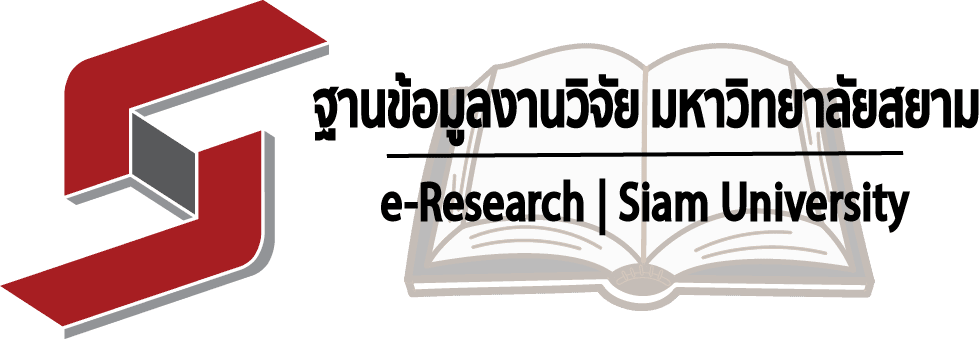- KB Home
- -ประจำปีการศึกษา | Academic Year
- ปีการศึกษา 2565|Academic Year 2022
- การประเมินความเสี่ยงในกระบวนการขัดชิ้นงานภายในบริษัทผลิตชิ้นส่วนอิเล็กทรอนิกส์
| ชื่อโครงงาน: Project Title: |
การประเมินความเสี่ยงในกระบวนการขัดชิ้นงานภายในบริษัทผลิตชิ้นส่วนอิเล็กทรอนิกส์ Risk Assessment in the Facing & Boring Process of Electronic Parts Manufacturing Company |
| ชื่อนักศึกษา: Author: |
นางสาววิริยา นามเรือง Miss Wiriya Namrung |
| อาจารย์ที่ปรึกษา: Advisor: |
อาจารย์หฤทชญา นับแสง Miss Haritchaya Nabsang |
| ระดับการศึกษา: Degree: |
วิทยาศาสตรบัณฑิต (วท.บ.) Bachelor of Science (B.Sc.) |
| ภาควิชา: Major: |
อาชีวอนามัยและความปลอดภัย Occupational Health and Safety |
| คณะ: Faculty: |
สาธารณสุขศาสตร์ Public Health |
| ภาคการศึกษา/ปีการศึกษา: Semester / Academic year: |
2/2564 2/2021 |
การอ้างอิง|Citation
วิริยา นามเรือง. (2564). การประเมินความเสี่ยงในกระบวนการขัดชิ้นงานภายในบริษัทผลิตชิ้นส่วนอิเล็กทรอนิกส์. (สหกิจศึกษา). กรุงเทพฯ: คณะสาธารณสุขศาสตร์ มหาวิทยาลัยสยาม.
Namrung W. (2021). Risk assessment in the facing & boring process of electronic parts manufacturing company. (Cooperative Education). Bangkok: Faculty of Public Health, Siam University.
บทคัดย่อ
โครงงานนี้เป็นการศึกษาการประเมินความเสี่ยงของผู้ปฏิบัติงานในกระบวนการขัดชิ้นงาน ซึ่งมีวัตถุประสงค์ เพื่อประเมินความเสี่ยงและกำหนดมาตรการป้องกันควบคุมอันตรายในกระบวนการขัดชิ้นงาน โดยใช้เทคนิคการวิเคราะห์อันตรายในงานเพื่อความปลอดภัย (Job safety Analysis) และประเมินความเสี่ยงจากโอกาสที่จะเกิดอันตรายและความรุนแรงที่จะเกิดขึ้น ทั้งนี้ได้มีการแบ่งหมวดหมู่ในการชี้บ่งอันตราย คือ คน วัสดุ อุปกรณ์ และ สิ่งแวดล้อม โดยจากการศึกษามีข้อสรุปในแต่ละหมวดหมู่ดังนี้ หมวดหมู่คน พบว่า มีรายการชี้บ่งทั้งสิ้น 10 รายการ โดย ความเสี่ยงยอมรับได้ 5 รายการ ความเสี่ยงปานกลาง 1 รายการ และความเสี่ยงสูง 4 รายการ ซึ่งความเสี่ยงสูงได้แก่ พนักงานลื่นล้ม กระดูกข้อมือร้าว เป็นต้น หมวดหมู่วัสดุ พบว่า มีรายการชี้บ่งทั้งสิ้น 4 รายการ โดย ความเสี่ยงยอมรับได้ 2 รายการ ความเสี่ยงปานกลาง 2 รายการ หมวดหมู่อุปกรณ์ พบว่า มีรายการชี้บ่งทั้งสิ้น 6 รายการ ทุกรายการเป็นความเสี่ยงที่ยอมรับได้ และ หมวดหมู่สิ่งแวดล้อม พบว่า มีรายการชี้บ่งทั้งสิ้น 6 รายการ โดย ความเสี่ยงปานกลาง 5 รายการ และความเสี่ยงสูง 1 รายการ ความเสี่ยงสูง คือ การล้างทำความสะอาดภายในเครื่องจักร จากนั้นกำหนดมาตรการป้องกันและควบคุมอันตราย เพื่อลดการเกิดอุบัติเหตุให้การทำงานในกระบวนการขัดชิ้นงาน ทั้งนี้องค์กรสามารถนำมาตรการไปใช้ให้เกิดประโยชน์ และบริหารจัดการงานด้านอาชีวอนามัยและความปลอดภัยได้อย่างมีประสิทธิภาพ
คำสาคัญ : การวิเคราะห์งานเพื่อความปลอดภัย, การประเมินความเสี่ยง, มาตรการป้องกัน, กระบวนการขัดชิ้นงาน
Abstract
Residential building construction has a high accidental rate due to gaps in occupational safety and health management. 7 MAKARA CO., LTD. is a construction contractor that prioritizes the safety of employees and created a safety requirement’s checklist to assess the work area. The aims of this projects were: (1) to report the result of the safety requirements checklist of the construction process to the architectural process; (2) to recommended any suggestions that improve the safety performance in the work area. The results showed the biggest issue of safety performance was that it does not follow the requirements of the construction process to architectural process, the house keeping and fire prevention was at 88%. This issue was also the highest safety performance error that did not meet the requirements in the last quarter (October – December 2021), by 92.31%.
Therefore, fixing the house keeping and fire prevention issue should improve the safety performance, such as increase the amount of bins and labeled clearly, set the area to collect unused materials, label clearly, and security should dispose of their cigarettes before working.
Keywords: construction, residential building, safety requirement’s checklist.
การประเมินความเสี่ยงในกระบวนการขัดชิ้นงานภายในบริษัทผลิตชิ้นส่วนอิเล็กทรอนิกส์|Risk Assessment in the Facing & Boring Process of Electronic Parts Manufacturing Company
คณะสาธารณสุขศาสตร์ มหาวิทยาลัยสยาม | Faculty of Public Health, Siam University, ฺBangkok, Thailand


